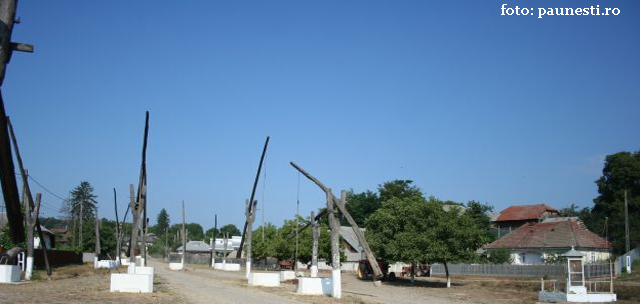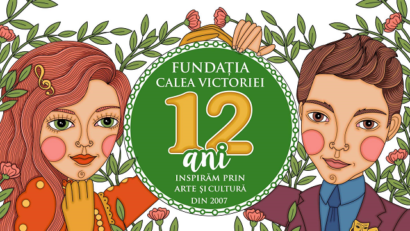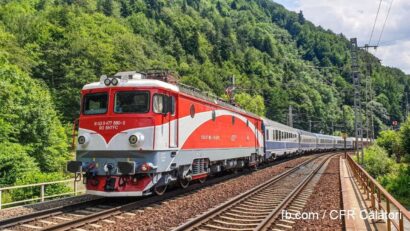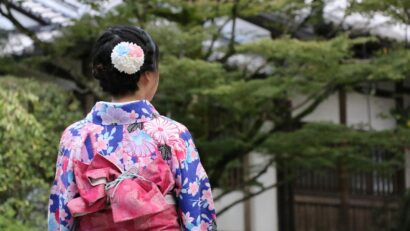Romania’s rural treasures
Icons of tradition in Romania's villages

Ana-Maria Cononovici, 25.05.2021, 14:00
Today we will take you to a journey along fairy-tale
paths. Our stopover is a commune that was first documented in 1551. The place
was officially registered as the Paunesti clearing. Back in the day, the locals
were free peasants or freeholders, razesi, in Romanian, living in the
surrounding villages. We’re in the Paunesti commune of today, in the
north-eastern part of Vrancea county, close to the border with Bacau county, on
the left bank of Carecna river. There is a place here, which is a one-of-a kind
spot countrywide: the center of the commune, where there are 30 stone-built wells with counterweight. The perimeter where the wells can be found is no larger than 2,500 square
meters. Wells with counterweight and carved, wooden buckets. The wells once used to
make the pride of the locality, since they were dug so that people can have
water, in a commune which is spread on several hills, and where the aquifer is
usually deep.
Gheorghe Popa is the mayor of the Paunesti commune. He
told us the tale of the wells with counterweight.
Gheorghe Popa:
The wells with counterweight are 100 years old,
in the commune of Paunesti and are made by the well-to-do people in the
locality. Two or three affluent families got together and had the wells built
in the center. People would come in the ox-drawn or horse-drawn carts they got
together and used wooden cisterns to transport the water back to their home, in
order to use it. There used to be many more such fountains, but now only around
30 of them were left. We have a project, we want to preserve them, and right
now we are waiting. We approached the minister, he even had a fact-finding visit,
then the development minister Ion Stefan, he also sent us a state secretary
with the Ministry of Culture, we try to preserve them. We have a bituminizing
project for the alleys between them which is the feasibility study stage.
The say the first well was the property of parish
clerk Ioniţă Chiriac. And also according to the legends of the place, back in
the day people got up at day-clean, driving their ox-drawn cart to the wells.
They no less than waited in line, taking water for the animals, but also for
themselves. Then the vineyards appeared and people took water back with them to
sprinkle their vineyards. The mayor of Paunesti also told us that each well
bears the name of the one who built it, so everybody knew they went to Duman
for their water supply, or to Ichim. According to the locals, the wells are
inherited from parents, so, for instance, the Berbece’s Well is today the best
well-kept of them all, since the inheritors in the family were supplicated by
their ancestors to take good care of the well.
Gheorghe Popa:
We cleaned them, every now and then. We
maintain them, we lime-coat them, we set them in order. Some of the people made
lids, but to do that, a great sum of money is needed. The people, and let me
just give you some of the names of the people of yesteryear: Ţaburaşi,
Berbecii, Duma, Murgoci, Ifrim, those were the names of the people who made them. And then the
wells were used by everybody. Wooden cisterns
were used to bring water home until 86-88, so people could fill their water
tanks.
However, the mayor of Paunesti, Gheorghe Popa, was
unhappy with the fact that the people still drank the water from the wells,
even though the water was not so safe.
At present, the commune is connected
to the water supply facility. On each well we had notifications written saying
the water was not drinkable, but people still use it for the animals.
Apart from the need to have water, another explanation
the locals gave for the construction of the wells was that according to a
tradition of the place, a well or a water source had to be built or repaired 40
days after someone died. Nearby those sources of water, roadside crosses were
placed, as well as crosses or icons.
Lots of foreigners arrive in the region, filming those
unique pieces, but the official approval is still expected so that the
project for the museum restoration of the wells can take off. At any rate, the area is beautiful and
welcoming.
Gheorghe Popa:
The commune of Paunesti is a big,
beautiful commune, with lots of hills, with the Carecna river valley, many
chalets have been built there, recently, on the either side, on one side we
have the Carecna river valley, on the other side the Mohorata commune. The
landscape is very beautiful.
We also found out that in the old days, as part of the
religious feasts observed in the commune, each and every man in the village
gathered around the wells for the consecration of the waters.






























